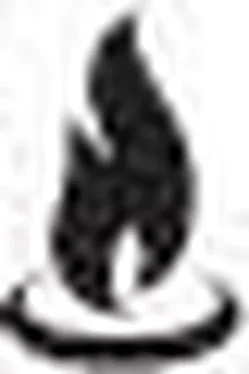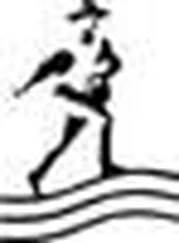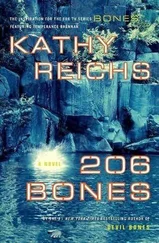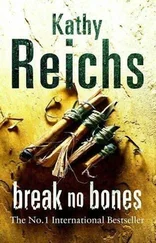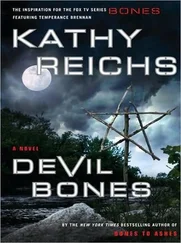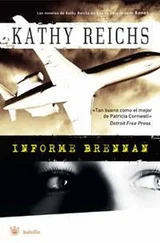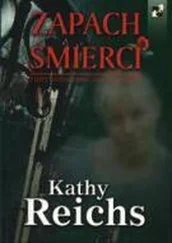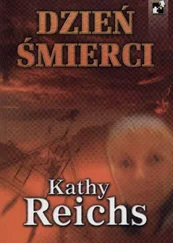Kathy Reichs - Bones to Ashes
Здесь есть возможность читать онлайн «Kathy Reichs - Bones to Ashes» весь текст электронной книги совершенно бесплатно (целиком полную версию без сокращений). В некоторых случаях можно слушать аудио, скачать через торрент в формате fb2 и присутствует краткое содержание. Жанр: Старинная литература, на английском языке. Описание произведения, (предисловие) а так же отзывы посетителей доступны на портале библиотеки ЛибКат.
- Название:Bones to Ashes
- Автор:
- Жанр:
- Год:неизвестен
- ISBN:нет данных
- Рейтинг книги:5 / 5. Голосов: 1
-
Избранное:Добавить в избранное
- Отзывы:
-
Ваша оценка:
- 100
- 1
- 2
- 3
- 4
- 5
Bones to Ashes: краткое содержание, описание и аннотация
Предлагаем к чтению аннотацию, описание, краткое содержание или предисловие (зависит от того, что написал сам автор книги «Bones to Ashes»). Если вы не нашли необходимую информацию о книге — напишите в комментариях, мы постараемся отыскать её.
Bones to Ashes — читать онлайн бесплатно полную книгу (весь текст) целиком
Ниже представлен текст книги, разбитый по страницам. Система сохранения места последней прочитанной страницы, позволяет с удобством читать онлайн бесплатно книгу «Bones to Ashes», без необходимости каждый раз заново искать на чём Вы остановились. Поставьте закладку, и сможете в любой момент перейти на страницу, на которой закончили чтение.
Интервал:
Закладка:
“Where did you get the skeleton?”
“Fella used to come in every couple months. Claimed he was an archaeologist before the war. Didn’t mention which war. Always had this mangy terrier trailing him. Called the thing Bisou. Kiss. No way I’d have put my lips anywhere near that hound. Guy spent his time searching for stuff to pawn. Poked through Dumpsters. Had a metal detector he’d run along the riverbank. That sort of thing. Brought in a brooch once was pretty nice. I sold it to a lady lives up in Neguac. Most of his finds were junk, though.”
“The skeleton?”
“Guy said he found it when he went out to the woods to bury Bisou. I wasn’t surprised. Dog acted a hundred years old. Old geezer looked like he could really use a lift that day. Figured I’d take a loss, but I gave him fifty bucks. Didn’t see any harm in it.”
“Did the man say where he’d buried his dog?”
“Some island. Said there was an old Indian cemetery there. Could have been hooey. I hear a lot of that. People think a good tale ups the value of what they’re offering. It doesn’t. An item’s worth what it’s worth.”
“Do you know the man’s name?”
O’Driscoll’s chuckle sounded like popcorn popping. “Said he was Tom ‘Jones.’ I’d bet my aunt Rosey’s bloomers he made that up.”
“Why is that?”
“Guy was French. Pronounced the name Jones . Spelled it Jouns .”
“Do you know what happened to him?”
“Stopped coming about three years back. Old duffer was frail and blind in one eye. Probably dead by now.”
After the call, I returned to the bones. Was there truth to Tom Joun’s Indian burial ground story? Could Hippo’s girl be a pre-Columbian aboriginal?
Cranial shape was distorted by breakage and warping. No help there. I rotated the skull and looked at the remnants of the face. The nasal spine was almost nonexistent. A nonwhite trait. Though dirt packed the opening, the orifice seemed wider than is typical of Europeans.
I went back to teasing dirt. Time passed, the only sounds in my lab the competing hums of the refrigerator and the overhead fluorescents.
The eyeballs are separated from the frontal lobe by the paper-thin bone forming the floor of the anterior cranial fossa. Clearing the right socket, I found jagged breaches in that floor. I moved on.
I’d emptied the left orbit when something caught my attention. Laying aside my pick, I dampened a cloth and swiped a fingertip over the orbital roof. Dirt came away, revealing pitted, porous bone in the upper, outer corner of the socket.
Cribra orbitalia.
Now we were getting somewhere. Or were we? While cribra orbitalia has a fancy scientific name, and the lesions are known to occur most commonly in kids, their cause has yet to be satisfactorily explained.
I did one of my mental rundowns. Iron deficiency anemia? Vitamin C inadequacy? Infection? Pathogenic stress?
All of the above? None of the above? A and B only?
I was as puzzled as ever.
Findings to this point included modification of toe bones, enlargement of nutrient foramina in the hands and feet, cortical destruction on at least one metacarpal, and now cribra orbitalia. Abnormally pitted orbits.
I had plenty of dots. I just had to connect them.
One thing was becoming clear. This girl had been sick. But with what? Had the ailment killed her? Then why the caved-in face? Postmortem damage?
Using warm water, I cleaned the entire left orbit. Then I picked up a magnifying lens.
And got my second surprise of the morning.
A black squiggle crawled the underside of the supraorbital ridge, just inside the thickened upper border of the socket.
A root impression? Writing?
I hurried to the scope and balanced the skull face-up on the cork ring. Eyes on the screen, I jacked the magnification.
Tiny hand-lettered characters leaped into focus.
It took several minutes, and several adjustments, but I finally managed to decipher the inscription.
L’Île-aux-Becs-Scies .
The quiet of the empty building enveloped me.
Had Jouns marked his skeleton with the name of the island on which he’d found it? Archaeologists did exactly that. He’d claimed to have been one in his youth.
I flew from my lab, down the corridor, and into the LSJML library. Locating an atlas, I flipped to a map of Miramichi.
Fox Island. Portage. Sheldrake. Though I pored over the map portions depicting the rivers and the bay, I found no Île-aux-Becs-Scies.
Hippo.
Back in my lab, I dialed his cell. He didn’t pick up.
Fine. I’d ask him later. He’d know.
Returning the skull to my worktable, I began freeing dirt from the nasal orifice with a long, sharp probe.
And encountered my third surprise of the morning.
13
THE APERTURE RESEMBLED AN UPSIDE-DOWN HEART, NARROW AT the top, bulging at the bottom. Nothing spiked from the dimple on the heart’s lower edge.
OK. I’d been right about the wide nasal opening and reduced nasal spine. But the nasal bridge was narrow with the two bones steepling toward the midline. And I could now see that the periphery of the orifice looked spongy, indicating resorption of the surrounding maxilla.
The girl’s nasal pattern didn’t mean she was Indian or African. The spike had been reduced, the shape modified by disease.
What disease?
Defects on the hands, feet, orbits, nose.
Had I missed something on the skull?
I examined every millimeter, inside and out.
The cranial vault was normal. Ditto for the base. What remained of the hard palate was intact. I was unable to observe the premaxillary, or most forward part of the roof of the mouth. That portion was missing, along with the incisors.
I rechecked the postcranial skeleton and found nothing beyond what I’d already spotted.
Hands. Feet. Orbits. Nose. What disease process would lead to that kind of dispersed bone damage?
Again, I considered possibilities.
Syphilis? Lupus vulgaris? Thalassemia? Gaucher’s disease? Osteomyelitis? Septic or rheumatoid arthritis? Blood-borne parasite? Infection due to direct extension from the overlying skin?
Diagnosis would take research. And with so much bone missing or damaged, I wasn’t optimistic.
I was pulling out Bullough’s Orthopaedic Pathology when Hippo came through the door. He was wearing a shirt festooned with bananas and red palm trees, gray pants, and a hat that would have made a drug lord proud.
Despite the “don’t worry, be happy” attire, Hippo did not appear to be having a good day. The bags under his eyes were heavier than usual, and he was frowning.
Hippo took a seat on the opposite side of the table. He smelled of bacon and stale deodorant.
“Saturday casual?” I asked, smiling.
Hippo didn’t smile back.
“I found the kid sister.”
“Where?” Suddenly Hippo had all my attention.
“I want you to hear me out.”
I settled back, elated, yet anxious at the same time.
“I did some poking into the husband.”
“David Bastarache.”
“Bastard would be more fitting. Your pal’s little sis married into a family of smugglers and bootleggers.”
“You’re kidding.”
“David’s granddaddy, Siméon, made a nice chunk of change running rum in the twenties, invested in real estate. Bars in Tracadie and Lamèque. A rooming house in Caraquet. David’s daddy, Hilaire, put his inheritance to good use. Turned some of the old man’s properties into ‘hides,’ safe havens for illegal booze and contraband.”
“Wait. Rumrunners?”
“Remember that proud moment in American history brought to you by the Eighteenth Amendment and the Volstead Act?”
“Prohibition.”
Читать дальшеИнтервал:
Закладка:
Похожие книги на «Bones to Ashes»
Представляем Вашему вниманию похожие книги на «Bones to Ashes» списком для выбора. Мы отобрали схожую по названию и смыслу литературу в надежде предоставить читателям больше вариантов отыскать новые, интересные, ещё непрочитанные произведения.
Обсуждение, отзывы о книге «Bones to Ashes» и просто собственные мнения читателей. Оставьте ваши комментарии, напишите, что Вы думаете о произведении, его смысле или главных героях. Укажите что конкретно понравилось, а что нет, и почему Вы так считаете.
